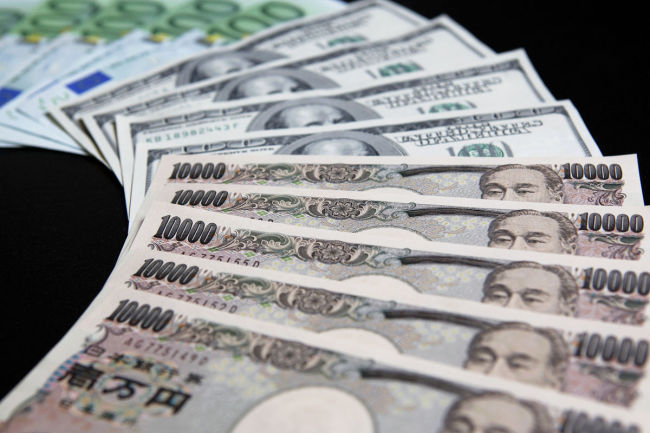The nation’s export sector could face further woes in terms of price competitiveness as Japan may consider another round of quantitative easing later this year, some analysts predict.
Korea, with an export-driven economy, was pinning hopes on its currency’s weakness against the Japanese yen and U.S. dollar during the third quarter after the country suffered a heavy slump in exports in the first half.
The Japanese currency, which rapidly gained versus the won and hovered 1,000 won per 100 yen in early September, recently had a turnaround to stay around 970 won. The U.S. dollar also lost ground against the won in the corresponding period, from the 1,200 won mark to below 1,170 won.
On Wednesday, the yen and greenback lost 0.2 percent and 0.49 percent, respectively, from a trading session earlier to finish at 967.51 won per 100 yen and 1,161.3 won.
Korea, with an export-driven economy, was pinning hopes on its currency’s weakness against the Japanese yen and U.S. dollar during the third quarter after the country suffered a heavy slump in exports in the first half.
The Japanese currency, which rapidly gained versus the won and hovered 1,000 won per 100 yen in early September, recently had a turnaround to stay around 970 won. The U.S. dollar also lost ground against the won in the corresponding period, from the 1,200 won mark to below 1,170 won.
On Wednesday, the yen and greenback lost 0.2 percent and 0.49 percent, respectively, from a trading session earlier to finish at 967.51 won per 100 yen and 1,161.3 won.

If the Japanese government chooses to print money on a massive scale again to spur economic growth, there is a high possibility that the won would rapidly gain, analysts note. In that scenario, the nation’s export items could lose price competitiveness in the wake of the possibly cheap yen.
Korea’s automobiles and electronic home appliances sector are closely competing with Japanese players on the global stage, while both have been challenged by China’s manufacturers.
“Japan is projected to see a slowdown in GDP growth, and its consumer price growth rate will stay under 2 percent. There is a possibility that Japan will conduct additional quantitative easing between October and November or early next year,” said a report from Dongbu Securities.
In addition, global investment banks forecast that the eurozone could also push for more quantitative easing, following a large-scale bill-printing early this year. This is another factor that could accelerate the Korean currency’s gain.
The issue is whether the U.S. will raise its benchmark interest rate within this year, as its monetary policymakers have hinted over the past few months. The won’s weakness against currencies of major developed countries was ascribable to the mounting expectations of a rate hike by the Federal Reserve.
A Hana Futures analyst predicted that a U.S. rate hike will lower the possibility of Japan’s quantitative easing. “The yen, like the won, will naturally lose value against the dollar under the scenario.”
Meanwhile, some analysts downplayed any such concerns, saying that policymakers in Tokyo appeared to have been split over the extra easing scheme.
In 2011 and 2012, the won-yen exchange rate ranged between 1,300 won and 1,550 won. Korean exporters, then, enjoyed bullish sales in the overseas market.
This year, the Bank of Korea and some private think tanks forecast the exports would drop by 4 percent to 6 percent, compared to 2014.
By Kim yon-se (kys@heraldcorp.com)


















